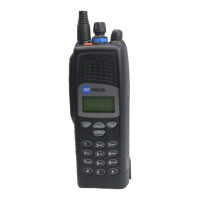TP9100 Service Manual General Information 83
© Tait Electronics Limited May 2005
4.3 Servicing Precautions
Introduction This section discusses the precautions that need to be taken when servicing
the radios. These precautions fall into the following categories:
■ mechanical issues
■ compliance issues
■ anti-static precautions
■ transmitter issues
Service technicians should familiarize themselves with these precautions
before attempting repairs of the radios.
Use of Torque-
drivers
Apply the correct torque when using a torque-driver to tighten a screw or
nut in the radio. Under-torquing can cause problems with microphonics and
heat transfer. Over-torquing can damage the radio. The illustrations in
“Reassembling the Radio” on page 112 show the correct torque values for
the different screws and nuts.
Non-Scratch Bench
Top s
Use workbenches with non-scratch bench tops so that the mechanical parts
of the radio are not damaged during disassembly and re-assembly.
(The workbench must also satisfy the anti-static requirements specified
below.) In addition, use a clear area of the bench when disassembling and
re-assembling the radio.
Note The radio is designed to satisfy the applicable compliance regula-
tions. Do not make modifications or changes to the radio not
expressly approved by TEL. Failure to do so could invalidate com-
pliance requirements and void the Customer’s authority to operate
the radio.
Sealing of Radio To maintain the sealing of the radio to IP54 standards, ensure that all seals
are fitted correctly when reassembling the radio.

